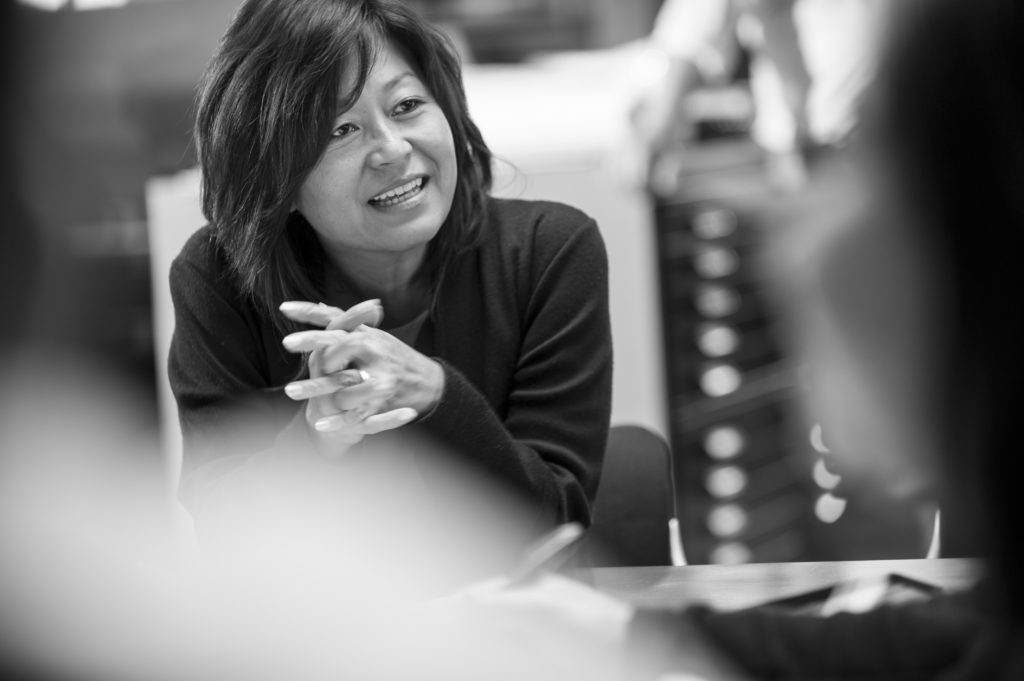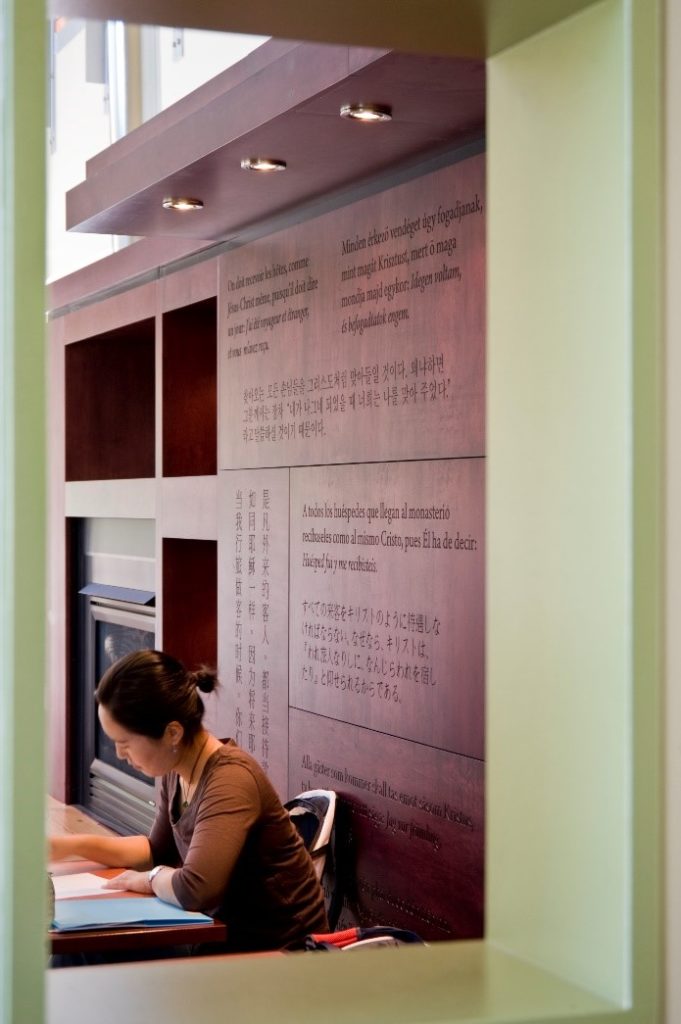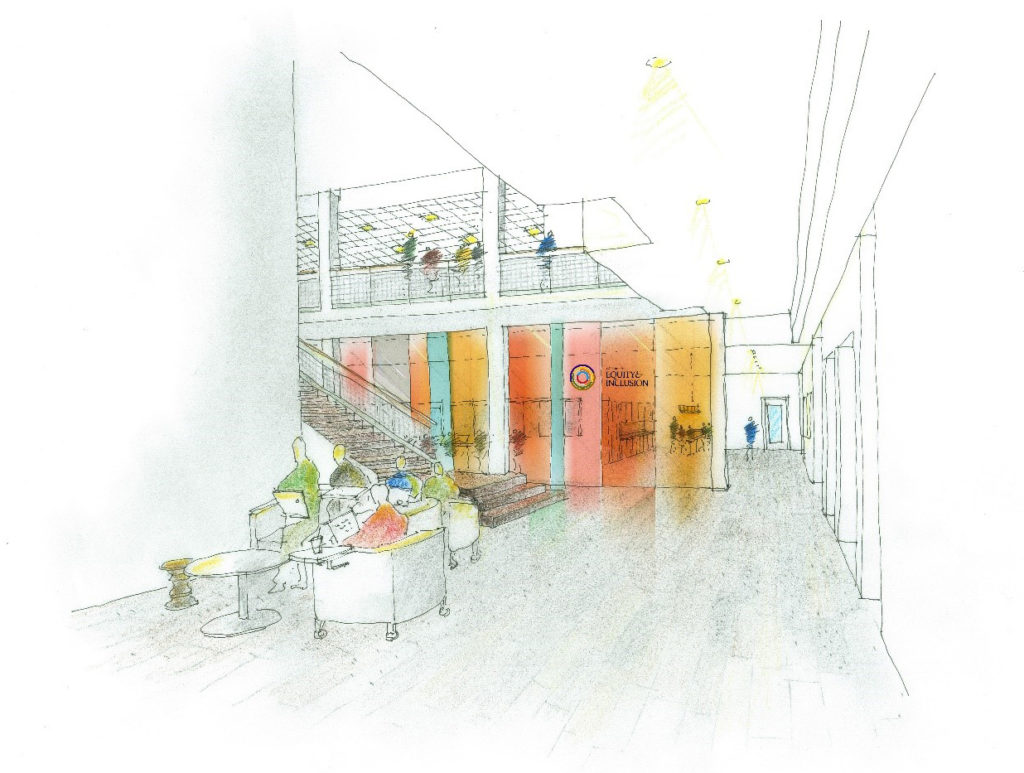Today, I am reflecting upon my American experience and the diversity and inclusion efforts on college and university campuses. I will explore what it means to create more diverse, inclusive, and equitable spaces in college and university educational environments, drawing from my unique position as both a foreign-born Korean-American woman and as an architectural designer whose focus is on environmental design.
My life journey in America started in 1979 with a dream of continuing education in the U.S., the melting pot country made up of immigrants from all over the world. I graduated with a Bachelor of Science in Interior Architecture and worked in Palo Alto, California – a city full of creative minds, colorful faces, and voices with foreign accents during the ‘80s. I remember how it felt working and socializing there; I felt comfortable and that I belonged in that beautiful and innovative city.

Eventually, I moved to the Northwest in the ‘90s, first to Seattle’s Queen Anne Hill, and then to a gated country club in Gig Harbor, a neighborhood with mostly white faces. I spent all my time immersing and assimilating to a mono culture. However, in 2007, I moved to the Tacoma Triangle District, the center of an urban environment with a diverse population made up of multi-racial, multi-generational, LGBTQ, and socioeconomically diverse neighbors and professionals. My journey of planning and designing colleges and universities started at the same time. I am grateful to apply my personal life experiences to the practice of more inclusive learning and environmental design.
How do we design campus learning spaces with the intent of creating more welcoming and inclusive environments to all students, with different backgrounds and from all walks of life? I want to share my experience with three essential campus environments: welcoming spaces that reflect students’ heritage and identity, safe spaces to support those students who are marginalized, and accessible and non-discriminatory spaces to serve all of us.
Welcoming Spaces that Reflect Students’ Heritage and Identity
Higher education institutions are more diverse today than ever before and represent the rich diversity that defines our country. College and university campuses have become much more diverse in terms of race, gender, generational status, nationality, ethnicity, linguistic background, sexual orientation, religious affiliation, and socioeconomic status, among other social identities. Institutions have responded to this changing context in multiple ways – by creating separate cultural center spaces in the past and gradually addressing physical facility planning and design opportunities associated with co-located diverse and inclusive environments.
By sharing common spaces on their campuses, historically marginalized communities can be in closer proximity to one another while maintaining a sense of their own space. These communities are often seeking a strong sense of connection within their own group as well as solidarity with others.
I believe that the ability of individuals to see their heritage and identity reflected in their surroundings is essential to creating a welcoming and inclusive environment. The campus aesthetics and its history communicate meaning and influence upon each individual’s perceptions of welcome and belonging. The homogeneity of buildings, as well as neutral and uniform palettes of interior spaces, can reinforce feelings of exclusion and intimidation by highlighting a single vernacular.
As planners and designers, we need to seize opportunities to include moments of variety and physical expression. Saint Martin’s University, like many institutions across the country, has seen an increase in the number of students speaking foreign languages. Our design team and the SMU art committee added featured wood panels in the fireplace Study Lounge and carved a welcoming message in the 16 languages spoken on the campus. This design strategy has helped students feel more at home.

Safe Spaces to Support Marginalized Students
We can also support students in their personal development by creating ‘safe spaces,’ or places from which they can develop comfort in cross-cultural interactions at their own pace.
We recently worked with the University of Washington Tacoma on a predesign for their new “Learning Commons,” which will connect three existing buildings. Our design team proposed a plan that brings their Center for Equity and Inclusion (CEI), previously separated, into the new Learning Commons. The idea is that while this new relocated CEI is planned in a central location, they should also exist independently from highly visible public spaces.
This plan is in response to a feeling expressed by students and faculty from historically marginalized groups. They felt that too much exposure might lead to their feeling under surveillance by other members of the campus community. They wanted a new space to provide students with a sense of freedom from judgment, harassment, or discrimination based on their various social identities. They also wanted a space that facilitates the opportunity to build solidarity with others who are also seeking a more just and equitable university atmosphere. The new transparent glass wall system, with branding colors and logo, was planned to create movement that promotes interaction, dialogue, and collaboration.

Transparent Glass Wall System with Brand Colors and Logo
Accessible and Non-discriminatory Spaces to Serve Us All
Finally, many institutions are embracing fully accessible non-discriminatory spaces. I share the belief that accessible design serves to benefit us all. There has been a recent emphasis on providing all-genders restrooms, and our Pacific Lutheran University School of Nursing Simulation and Skills Center is a great example. The PLU School of Nursing believes that the art and science of nursing is relationship-based and directed by humanitarian values of dignity, interdependence, and social justice. The university’s efforts to provide restrooms to all-gender facilities reflect its commitment to person-centered care and inclusiveness. Our environmental and social design strategies for this project include not only creating healthy learning environments to support nursing education spaces and industry partnerships, but also designing accessible non-discriminatory ‘built’ environment as one way to respect the dignity of each individual.
Space matters.
Welcoming and inclusive learning environments support a growing number of students from all walks of life. Promoting openness and expanding student participation in our planning and design process are extremely important. Listening to the needs and desires of our students is crucial to closing the achievement gap. We must provide students and faculty with every available opportunity to feel that they belong. That they can grow and succeed for our future society, just as I did in Palo Alto, collaborating with and supporting one another through the kaleidoscope of various experiences and identities.
